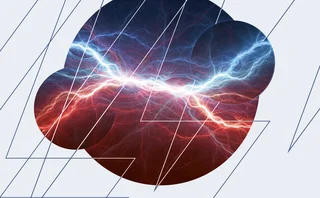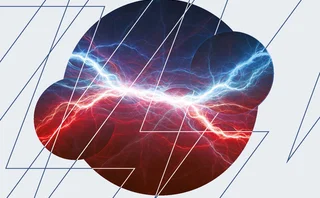
Renewable PPAs find favour among corporates
A small but growing number of companies are using renewable energy power purchase agreements to lock in cheap forward electricity prices. But it may take some time before going green becomes a sound risk management strategy for all firms, writes Alexander Osipovich

Volatile energy costs are a huge headache for companies trying to craft long-term investment plans. Who knows what could happen to the price of oil, gas or electricity 10 or 20 years from now? By hedging with derivatives or using fixed-price supply contracts, firms can guarantee some degree of price stability. Nonetheless, it is difficult to hedge energy costs more than several years into the future, due to the limited liquidity found in derivatives markets beyond that time horizon.
There is a better way to plan for the long run, say advocates of renewable energy. Unlike coal- or gas-fired generation, solar and wind power do not depend on fuel costs, since generators do not need to pay for the wind to blow or the sun to shine. Consequently, a growing number of companies see risk management benefits to obtaining long-term fixed-price renewable energy through power purchase agreements (PPAs). Using such deals, companies can lock in their electricity prices for as long as 25 years, while winning the right to boast about their environmental stewardship to customers and the general public.
“Where else can you get a 20-year-plus hedge in the marketplace for some substantial portion of your power usage?” asks Michael Smith, vice-president for solar and efficiency sales at Baltimore-based electricity firm Constellation Energy. “That is, economically, an extremely advantageous thing for a company to do.”
But despite the intriguing potential, the number of corporate end-users that are using renewable energy PPAs remains small. Market participants say such transactions are too complex or unusual for many companies to execute. More importantly, solar and wind power are still too expensive in most places compared with energy from conventional sources – and the occasional opportunities that do exist often arise because of government incentives. So while procuring green energy via PPAs might eventually become the corporate hedging strategy of the future, it still has a long way to go.
Making the leap
One company that has made the leap into direct renewable energy procurement is US car giant General Motors (GM). The Detroit-based firm has a portfolio of more than 60 megawatts (MW) of renewable energy PPAs, including wind, solar and landfill gas agreements, according to Rob Threlkeld, Michigan-based renewable energy manager at GM.
GM’s top priority in its renewable energy procurement is to ensure that each PPA saves the company money compared with the alternative of buying power from the grid. Unless the PPA brings about cost savings from day one of the agreement, GM will not do the deal, Threlkeld says. “That does limit you to certain locations,” he admits. “But for the most part, they have all saved us a considerable amount of money.”
Since GM can use PPAs to lock in prices over extended periods of time – its solar agreements typically have 20-year terms, while its wind agreements have shorter terms of around 15 years – they give the company the additional benefit of protection against future price volatility. “Cost savings [are] the main driver, but price stability is a close second,” Threlkeld says.
In the US, some of the most attractive economics for renewable energy PPAs exist for wind projects in the centre of the country, in a band of states running from Texas to the upper Midwest. Prices for wind PPAs executed in North Dakota, Kansas and Oklahoma came in at just above $30 per megawatt-hour (/MWh) during 2012, according to Bloomberg New Energy Finance (BNEF), a unit of New York-based news and data vendor Bloomberg. BNEF does not report the terms of the PPAs, but most transactions in the region have 20-year terms, says Amy Grace, New York-based lead analyst for wind power at BNEF. At these price levels, wind power has become competitive with wholesale electricity, particularly in more expensive markets, such as that operated by the Electric Reliability Council of Texas (Ercot). Forward prices for Ercot North on-peak power in 2014 and 2015 stood at $52.90/MWh and $53/MWh as of April 10, respectively, according to New York-based price reporting agency Platts.
That makes for some promising deals, say market observers. “In Ercot, there are opportunities for corporates that are willing to take a long position to lock in pricing underneath the forward curve for the life of the PPA,” says Kenneth Davies, managing director for market analytics at Altenex, a Massachusetts-based firm that maintains a database of renewable energy projects around the US and advises corporations on the renewable PPA market.
Solar PPAs have also become more attractive due to plunging prices for photovoltaic (PV) panels, which convert sunlight into electricity. BNEF estimates the cost of solar energy fell about 70% between the third quarter of 2008 and the third quarter of 2012.
Still, large-scale solar projects find it tough to compete with conventional power, even in the southwestern US, where a sunny climate tends to favour solar. When California held an auction for utility-scale solar projects in 2011, the best bids were all in the range of $70/MWh to $90/MWh for 20-year PPAs, according to BNEF. Although that marked a significant improvement in pricing compared to previous years, it still exceeded the price of wholesale power in the state. On April 10, forward prices for peak power at the South Path 15 trading hub in southern California were $50.45/MWh for 2014 and $51.40/MWh for 2015, according to Platts. As a result, developers of large-scale solar projects in California typically sell their power to utilities, which are required by state regulations to buy renewable energy, rather than corporate buyers.
It is a different story for small-scale solar projects, particularly customer-sited projects, in which companies put solar panels on their roofs to help offset their delivered electricity costs. Thanks to falling PV prices, there has been a boom in such projects. In 2012, there were 1,040MW of new commercial solar installations, up 26% from 2011, says the US Solar Energy Industries Association, a Washington, DC-based trade group.
The rise in small-scale projects has been facilitated by third-party providers, which take care of installing and maintaining the solar panels and sell the power to their customers through a PPA. These companies say they can increasingly offer rates that are cheaper than power from the grid, under contracts that keep prices constant for 20 years. “We feel pretty good about the sale if we can sell the customer energy at a rate that’s 10% or more off their delivered energy bill,” says Smith at Constellation Energy, which has about 100MW of customer-sited solar facilities across the US.
In addition, by buying power that is generated on their own rooftops, companies can save money on the transmission and distribution (T&D) rates that utilities add to their customers’ power bills, according to Smith. In other words, customer-sited solar PPAs are also a hedge against rising fees. “It’s hard to see a world where T&D rates are not going to go up, as more and more utilities are being pushed by their public services commissions to up their investment in infrastructure,” Smith says.
The US is not the only place where renewable PPAs have taken off. Further afield, the UK is also home to a small number of corporate end-users that have entered into PPAs to procure renewable energy. London-based retailer Marks & Spencer (M&S) is among the UK’s most active corporate end-users of PPAs, having entered into agreements to buy power from various independent generators running wind farms, biogas plants and other renewable energy facilities. “We’ve taken the route of encouraging the uptake of renewable technology by acting as an offtaker,” says Giacinto Patellaro, head of energy supply and risk at M&S. Like other UK firms that engage in renewable PPAs, M&S uses them to buy not just power, but also certificates attesting to the green origins of that power. Those certificates help M&S meet its goal of being carbon neutral and reduce its liabilities under a UK tax aimed at industrial and commercial users of energy that is not generated from renewable sources.
Echoing energy purchasers at other firms that have executed renewable PPAs, Patellaro stresses the company’s deals are not simply a public relations exercise. “We have an obligation to our shareholders to maximise profits and increase shareholder wealth,” he says. “So the sustainability program hinges upon the commercial sense of these projects. I wouldn’t be doing any PPAs unless they made commercial sense.”
The firm’s portfolio of PPAs, which typically have three-year terms, also gives the company greater certainty over its energy costs. “Pretty much what we have is a three-year forward hedging strategy,” Patellaro says. “We try not to go beyond the five-year term. There is uncertainty beyond that term because of potential changes in law that could shift the fundamentals.”
Other UK companies have concluded renewable energy PPAs for longer terms – for instance, London-based supermarket chain Sainsbury’s and UK-based building materials maker Tarmac have both entered 10-year wind PPAs.
The risk management benefits of such deals are similar to those found in the US, since they allow firms to lock in their electricity costs for longer than they could by hedging with derivatives, market participants say. “The depth in the UK wholesale power hedging market is not huge,” says Tim Foster, London-based head of UK renewable origination for Statkraft, the Norwegian state-owned electricity firm, which recently established a PPA business in the UK. “Forward contracts go out for three years, but the real liquidity is in the front 18 months. So if you’re a corporate consumer, and energy is one of your larger costs – for instance, if you are one of the big supermarket chains in the UK, for which energy is one of their top three costs – then the only way to get long-term certainty in your power price is to buy from non-utility, non-wholesale market players, and that is why you see the desire to contract with independent generators.”
Still, the size of the local market remains limited. Foster estimates that fewer than 10 corporate end-users in the UK are actively buying renewable energy directly through PPAs, but he believes the potential market for such transactions could be as many as 50 to 60 companies. The market would have grown faster were it not for the 2008 financial crisis and subsequent downturn, he adds: “It was very much a growing market until about five years ago,” he says.
The opportunities presented by renewable PPAs are changing the way UK companies look at energy purchasing, according to Mervyn Bowden, managing director of Intuitive Energy Solutions, a UK-based energy procurement consultancy. “There are not many companies in the UK that are that good at buying energy forward, and I include large corporates in that,” says Bowden, a former head of energy management at M&S. “What PPAs are slowly doing is driving a longer-term view in the UK energy buying fraternity, which I think is a thoroughly good thing.”
Subsidies
Elsewhere in Europe, the market for renewable PPAs is limited due to the existence of generous feed-in tariffs for producers of renewable energy. Under feed-in tariffs, the developer of a renewable energy project is guaranteed to receive a certain price for its power output, and the government sets that price high enough to cover the developer’s costs. Those costs are borne by utilities, which are obliged to buy the renewable energy – and ultimately, by their customers.
Feed-in tariffs have been highly successful in boosting the share of European energy consumption that comes from renewable sources, particularly in places such as Germany, where the proportion of electricity generated by renewables has shot up in recent years. But at the same time, they have pushed corporate end-users away from buying power through renewable energy PPAs, because wind and solar developers prefer to sell their electricity to utilities at generous rates set by the feed-in tariffs, rather than to end-users that can buy power more cheaply from the grid. In contrast, most states in the US do not use feed-in tariffs, while the UK has a relatively limited policy that only applies to renewable energy projects generating less than 5MW.
“Because many European countries support renewables through feed-in tariffs, corporations are less likely to buy renewable energy through PPAs than in the US,” says Brian Potskowski, London-based senior European power analyst with BNEF. “But that also means that they are more likely to make direct investments in wind farms and other renewable projects, because then they can take advantage of the feed-in tariffs themselves, if they can sell that power into the grid.”
European companies that have made high-profile direct investments in renewable energy include Swedish retailer Ikea – which has bought wind farms in Germany, France and the UK in recent years – as well as Belgium-based supermarket operator Colruyt, which is the majority shareholder in a 216MW offshore wind project currently under construction off the Belgian coast. Both companies have touted their investments as examples of corporate social responsibility, but their direct ownership of wind farms also allows them to profit from feed-in tariffs.
In the US, the favourable wind deals by firms such as Google and Walmart have been propped up by a very different subsidy regime. The US federal government encourages the development of wind energy through its wind production tax credit (PTC) scheme, which provides wind power generators with a tax credit of 2.2 cents per kilowatt-hour – or $22/MWh – during the first 10 years of the wind project, allowing generators to pass those savings through to their customers. Without the wind PTC, market participants say the attractive economics of US wind power would vanish overnight.
That could potentially happen thanks to the capricious nature of Washington politics. The wind PTC had been set to expire on December 31, 2012. But in early January, as part of a deal to avert a round of sharp spending cuts and tax increases known as the fiscal cliff, Congress extended the subsidy by another year. With politicians increasingly sceptical of renewable energy subsidies, many market participants believe the wind PTC could get eliminated, or gradually phased out, the next time it comes up for debate by legislators.
Davies at Altenex expects an uptick of new wind PPAs before the end of 2013, as end-users seize advantage of the tax credit before the deadline. “I fully expect you’re going to see more corporates in the market very soon, and probably before the end of the year,” he says. “A lot of companies are looking right now, especially in the wind market, to find PPAs and take advantage of the production tax credit, before it’s expected to disappear.”
Shale shock
Although renewable energy PPAs are gradually becoming more popular among US corporates, they face a strong challenge from the country’s abundant reserves of cheap shale gas. The unlocking of huge reserves of natural gas in shale rock formations across the US has caused natural gas prices to drop, with the benchmark Henry Hub natural gas spot price hitting a 10-year low of $1.82 per million British thermal units (/MMBtu) on April 20, 2012. In turn, that has depressed wholesale power prices, weakening the economic case for buying renewable energy via PPAs.
“Power getting cheaper because of the boom in natural gas production is probably the single biggest countervailing force against the spread of renewable power generation,” says Jonathan Burnston, manager for environmental products at Karbone, a New York-based environmental brokerage and advisory firm.
Many analysts caution that natural gas prices are set to rebound, however, due to burgeoning industrial demand for gas and exports of liquefied natural gas from the US Gulf Coast, which could potentially start as soon as 2015. To some market observers, that means this is a good time for consumers to lock in prices through a long-term renewable energy PPA.
Mark Bolinger, a New Hampshire-based research scientist affiliated with the US Department of Energy’s Lawrence Berkeley National Laboratory, believes energy consumers can actually save money by locking in prices with a 20-year wind PPA, but says they will need to be patient to see the savings. In a recent paper, Bolinger compiled data on wind PPAs concluded in 2011 and 2012 – which mostly ranged in price between $40/MWh and $50/MWh – and examined how those deals might play out as natural gas prices rebound. For future natural gas prices, Bolinger used projections from the US Energy Information Administration (EIA), which envisions Henry Hub spot prices rising to $4/MMBtu by 2018 and $5.40/MMBtu by 2030.
According to Bolinger’s calculations, the power procured from a long-term wind PPA entered into at today’s prices would start being cheaper than buying from conventional sources in 2022. In other words, from 2022 onward, that PPA would bring a firm more and more savings every year. That result, however, depends heavily on the PTC. Without the tax credit, Bolinger calculates that the break-even year for a long-term wind PPA would be pushed further down the line to 2035.
Given the wind PTC’s uncertain future, and given the possibility natural gas prices will rise from their current levels, Bolinger concludes it is a good time to hedge with a long-term wind PPA. “It is a great time to lock in wind prices now,” he says.
Only users who have a paid subscription or are part of a corporate subscription are able to print or copy content.
To access these options, along with all other subscription benefits, please contact info@risk.net or view our subscription options here: http://subscriptions.risk.net/subscribe
You are currently unable to print this content. Please contact info@risk.net to find out more.
You are currently unable to copy this content. Please contact info@risk.net to find out more.
Copyright Infopro Digital Limited. All rights reserved.
You may share this content using our article tools. Printing this content is for the sole use of the Authorised User (named subscriber), as outlined in our terms and conditions - https://www.infopro-insight.com/terms-conditions/insight-subscriptions/
If you would like to purchase additional rights please email info@risk.net
Copyright Infopro Digital Limited. All rights reserved.
You may share this content using our article tools. Copying this content is for the sole use of the Authorised User (named subscriber), as outlined in our terms and conditions - https://www.infopro-insight.com/terms-conditions/insight-subscriptions/
If you would like to purchase additional rights please email info@risk.net
More on Energy
Energy Risk Commodity Rankings 2024: markets buffeted by geopolitics and economic woes
Winners of the 2024 Commodity Rankings steeled clients to navigate competing forces
Chartis Energy50
The latest iteration of Chartis’ Energy50 ranking
Energy trade surveillance solutions 2023: market and vendor landscape
The market for energy trading surveillance solutions, though small, is expanding as specialist vendors emerge, catering to diverse geographies and market specifics. These vendors, which originate from various sectors, contribute further to the market’s…
Achieving net zero with carbon offsets: best practices and what to avoid
A survey by Risk.net and ION Commodities found that firms are wary of using carbon offsets in their net-zero strategies. While this is understandable, given the reputational risk of many offset projects, it is likely to be extremely difficult and more…
Chartis Energy50 2023
The latest iteration of Chartis' Energy50 2023 ranking and report considers the key issues in today’s energy space, and assesses the vendors operating within it
ION Commodities: spotlight on risk management trends
Energy Risk Software Rankings and awards winner’s interview: ION Commodities
Lacima’s models stand the test of major risk events
Lacima’s consistent approach between trading and risk has allowed it to dominate the enterprise risk software analytics and metrics categories for nearly a decade
2021 brings big changes to the carbon market landscape
ZE PowerGroup Inc. explores how newly launched emissions trading systems, recently established task forces, upcoming initiatives and the new US President, Joe Biden, and his administration can further the drive towards tackling the climate crisis
Most read
- Top 10 operational risks for 2024
- Japanese megabanks shun internal models as FRTB bites
- Market for ‘orphan’ hedges leaves some borrowers stranded







